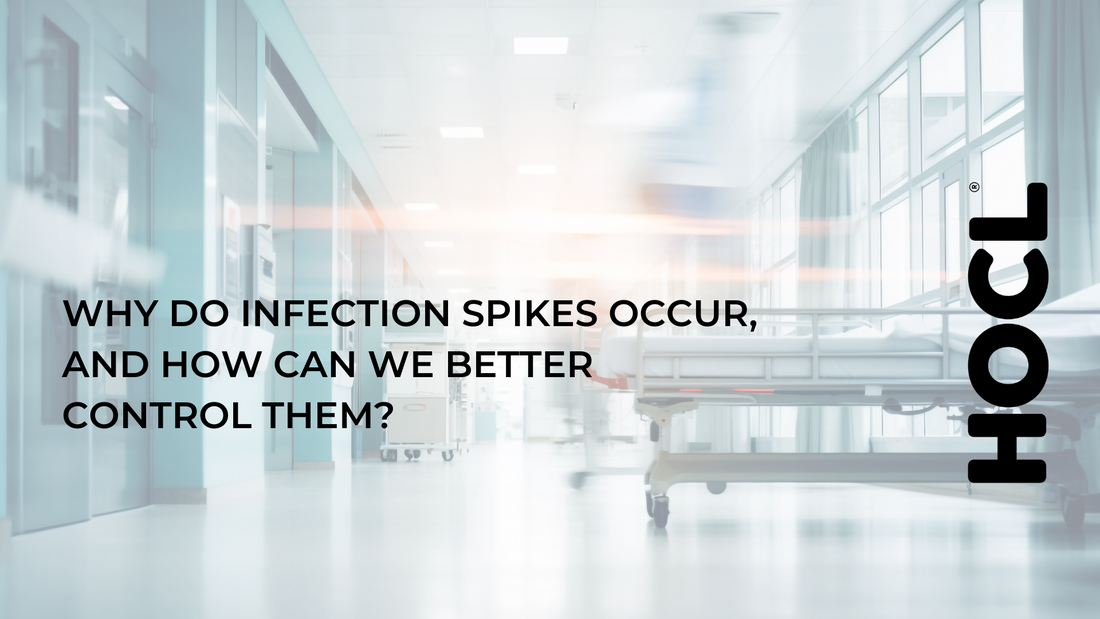Infection spikes can happen when disinfectants fail to eliminate all pathogens, allowing the remaining microbes to regrow and spread. A key factor is the choice and effectiveness of disinfectants. Over time, pathogens can develop resistance to certain disinfectants, contributing to the rise of infection spikes.
The Role of Chlorine and Its Limitations
Chlorine has long been used as a disinfectant in hospitals, homes, and other environments due to its ability to kill a wide range of pathogens. It can eliminate up to 99.99% of pathogens, but in a scenario where 100,000 pathogens are present on a surface, up to 1,000 still remain after disinfection. These remaining pathogens can multiply under favourable conditions, leading to infection spikes.
Additionally, pathogens have become increasingly resilient to chlorine over time. Prolonged exposure has enabled them to develop mechanisms to survive, such as forming biofilms—protective layers that shield pathogens from disinfectants. Chlorine struggles to penetrate biofilms, allowing bacteria and other microbes to persist and regrow, contributing to recurring infection spikes.
HOCL® A More Effective Alternative
HOCL® hypochlorous solution is proving to be a much more effective alternative to chlorine. One of its main advantages is that pathogens cannot develop resistance to it, thanks to its neutral charge. Unlike chlorine, which pathogens can gradually adapt to, Hypochlorous is able to penetrate and destroy the cell walls of pathogens without resistance.
HOCL is especially effective at breaking down biofilms. These biofilms, which protect pathogens from disinfectants like chlorine, are vulnerable to HOCL. It can penetrate and dissolve the protective layers, directly attacking the pathogens within. By eliminating biofilms, HOCL prevents pathogens from surviving on surfaces and reduces the chance of regrowth, effectively curbing the potential for infection spikes.
Additionally, HOCL can kill up to 99.9999% of pathogens, meaning that if a surface contains 100,000 pathogens, fewer than 10 will remain after treatment. This sharp reduction in the number of surviving microbes significantly lowers the risk of them regrouping and causing further infections.
HOCL is also safer for humans and the environment, as it is less irritating and leaves behind minimal harmful residues. Its ability to destroy biofilms and prevent resistance makes it a superior disinfectant compared to chlorine.
Addressing Infection Spikes with Better Solutions
While HOCL provides a powerful solution by eliminating biofilms and preventing pathogen resistance, infection control requires a comprehensive approach. This includes:
- Consistent and thorough cleaning practices
- Proper application of disinfectants
- Regular hand hygiene
- Good air ventilation and filtration systems
By replacing chlorine with HOCL® hypochlorous decontamination solution, we can more effectively eliminate pathogens, break down biofilms, and reduce the likelihood of infection spikes. When combined with proper hygiene and cleaning protocols, HOCL offers a safer, more reliable way to control the spread of infections.

